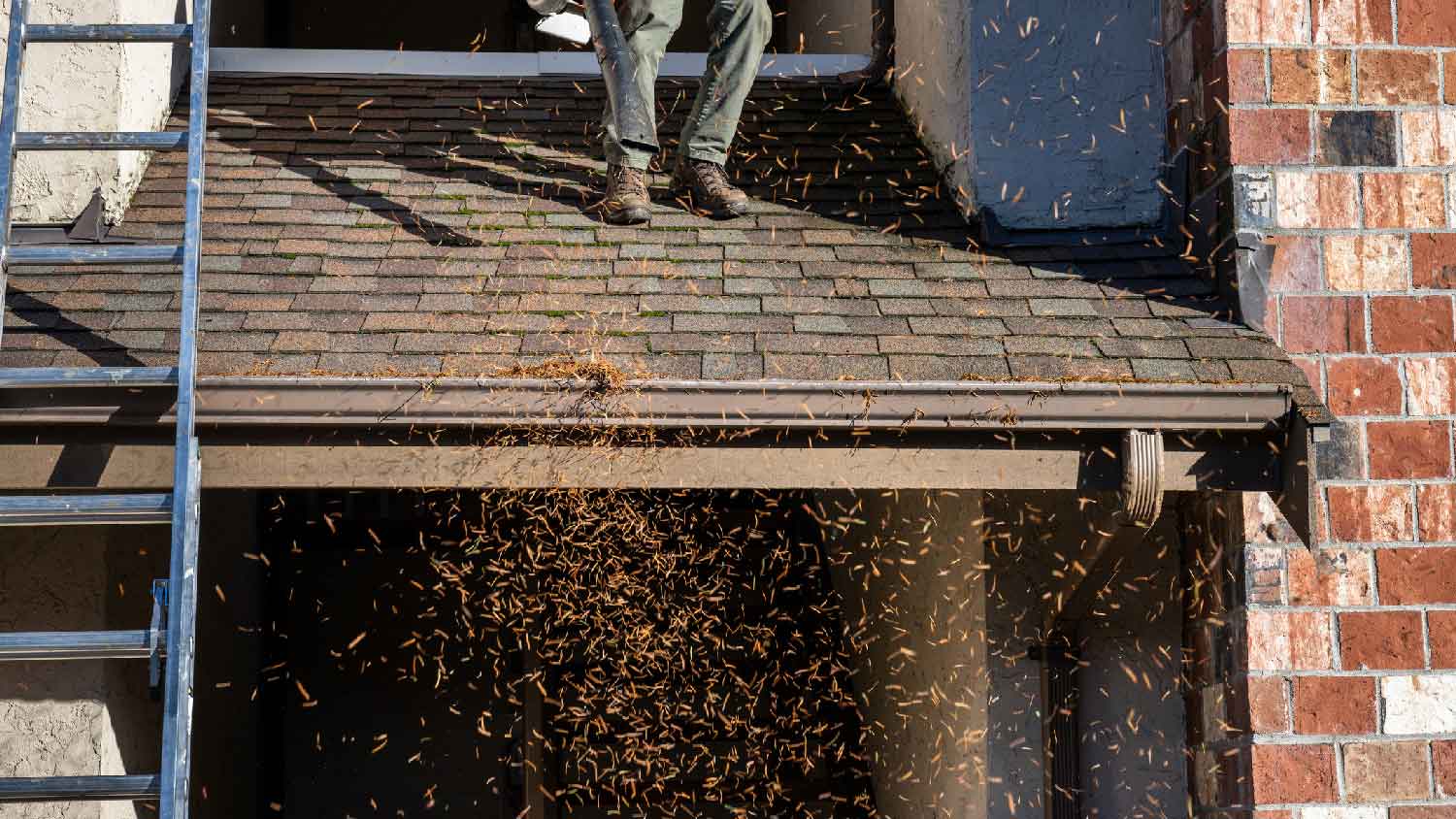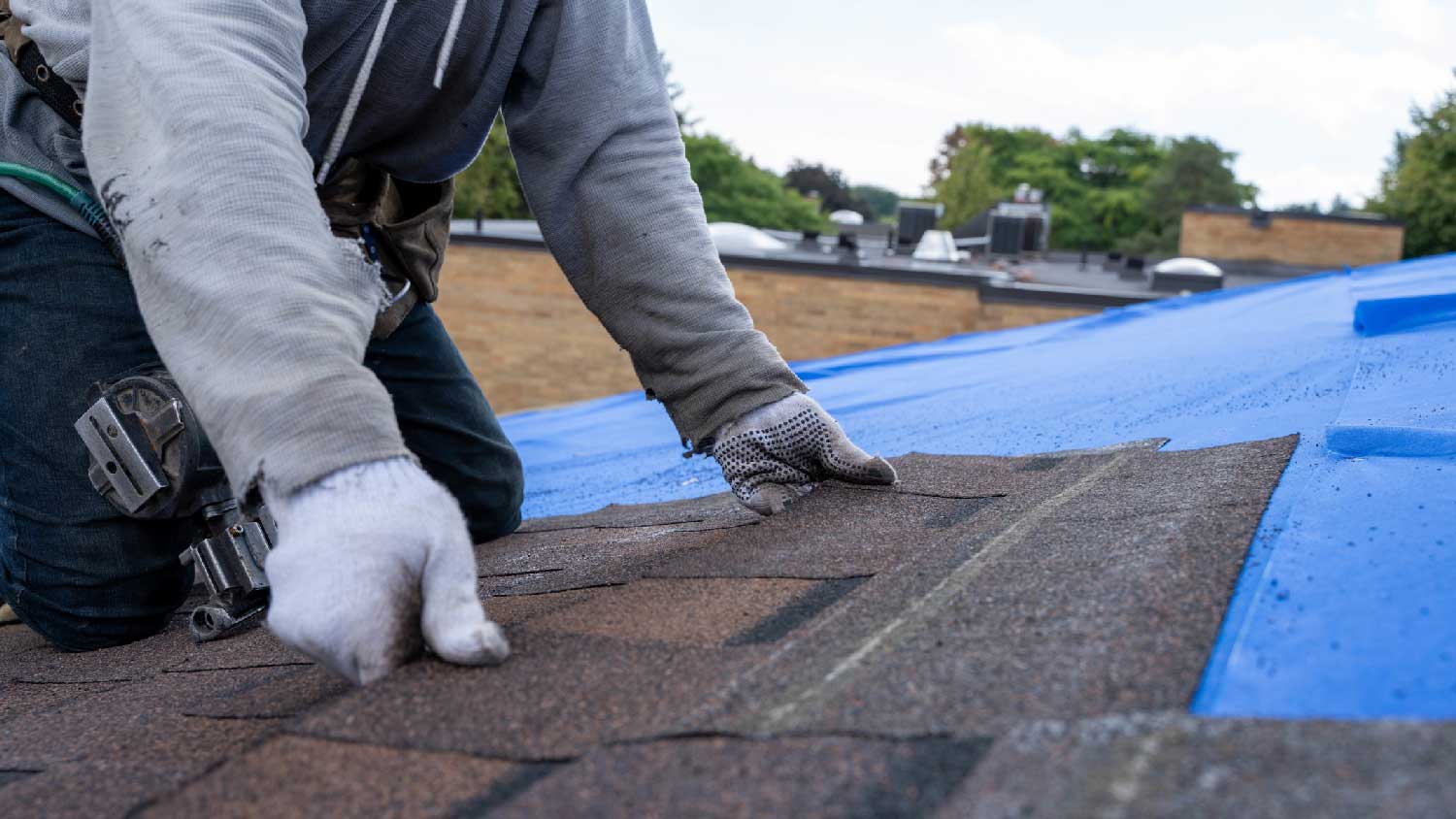
Knowing your home's roof underlayment replacement cost can help estimate the cost of roof replacement. Learn about the factors that affect prices.
Identifying roof blisters before they pop


Roof blisters appear most often on rolled roofing, but they’re also common on asphalt shingle roofs.
Roof blisters form from pockets of air trapped between layers of roofing material. The air expands in the heat until the bubble pops.
Popped roof blisters expose your home to water damage, making them an emergency repair.
Most homeowners are familiar with the common types of roof damage, like missing or broken shingles or faulty or damaged roof flashing. Roof blistering is a less common but equally severe form of roof malfunction requiring emergency repair. In this guide, we’ll explain roof blistering, the underlying causes, how to prevent it, and more.
Roof blistering is when a pocket of air gets trapped between the layers of your roof materials. In direct sunlight, your roof heats up, which causes the trapped gas to expand and eventually burst through the surface of the roof, exposing the underlayment and roof decking.
Roof blistering is most common on rolled roofing, but it can occur on asphalt shingle roofs, as well. Once the blisters pop, the resulting damage looks similar to hail damage or damage from other impacts, and it requires a similar level of urgency when it comes to repair.
There are a few different things that can cause roof blistering:
Poor ventilation: Poor attic ventilation is a leading cause of roof blistering because heat trapped in the attic will continue to heat up the roofing material. With higher temperatures, asphalt and adhesives can bubble and trap air inside, leading to blistering. As such, roof blisters are more common on hot roofs vs. cold roofs.
Manufacturing defects: Poorly manufactured asphalt shingles can leave air voids trapped between the materials. When the shingles encounter excessive heat on your roof, the gas inside will expand and create blisters.
Extreme temperatures: In areas with extremely high temperatures and direct sunlight, asphalt and adhesives in the roofing material can liquefy and trap air inside as they cool.
Moisture problems: Moisture trapped between roofing materials during installation or due to a minor roof leak will expand once heated and can create blisters.
Improper installation: In some cases, roof blisters can be a sign of poor roof installation. If an inexperienced roofing company fails to set the adhesive strips on the shingles properly or doesn’t use roofing cement as intended, it could promote air getting trapped under the shingles.

Preventing roof blistering in the first place will save you time and money on repairs down the road. Use the following tips when replacing your roof or installing one on new construction:
Ventilate your attic: One of the best ways to avoid roof blistering is to ensure your attic is properly ventilated. Providing a means of air transfer from your attic to the outside will help prevent your shingles from overheating and will keep your home cooler in the summer, as well.
Use high-quality materials: Since manufacturing defects routinely lead to roof blistering, choosing high-quality roofing materials is another good way to prevent this damage. You might pay more upfront, but the peace of mind is worth it, let alone the reduced risk of expensive roof repairs.
Hire an experienced roofing company: Make sure you hire a reliable roofing company near you to carry out installations, replacements, and repairs. Doing so might cost more, but you’ll be more likely to avoid installation errors that promote blistering.
Schedule regular roof cleaning: If you have trees near your roof or you notice that your roof grows moss, scheduling roof cleaning twice a year is a good way to prevent roof blistering. Tree branches and moss both hold moisture against your shingles, which can cause bubbles to form.
Scheduled annual roof inspections: Finally, schedule a roof inspection once a year if you’re concerned about roof blistering or have experienced the issue in the past. This won’t prevent the underlying problem, but it can help prevent the bubbles from popping and exposing your underlayment and decking.

Popped roof blisters and hail damage look very similar—like small, round pockmarks on your shingles—and result in the same issue: exposure of your underlayment and roof deck to the elements. However, there are some key differences.
The first and most important difference is the underlying cause. Roof blisters form because of poor attic ventilation, poor roof installation, or low-quality roof materials in most cases. Hail damage is a result of the impact of hail, which can break off roof grit and even crack your shingles. Furthermore, homeowners insurance often covers hail damage since it results from a natural disaster, while roof blistering is considered avoidable and usually isn’t covered.
Finally, hail damage results in sudden exposure of your lower roofing system to the elements, as a single impact causes a hole in your shingles. Roof blisters begin as bubbles beneath the surface of your roof and start as just cosmetic issues. Eventually, the blisters pop, at which point your roof is similarly exposed.
Roof blisters are preventable, and a professional who fixes roofs can stop small ones from worsening, while hail damage is unavoidable.
The average cost to repair a popped roof blister is around $550, and prices can range from $100 up to $1,000 per blister, depending on the size and severity. Roof repair costs also vary based on the quality of your roof, its design complexity, your location, the pro you hire, and more. Contact a roof repair company near you for an accurate estimate of your roof damage.
From average costs to expert advice, get all the answers you need to get your job done.

Knowing your home's roof underlayment replacement cost can help estimate the cost of roof replacement. Learn about the factors that affect prices.

The average cost of roof repair for U.S. homeowners averages between $386 and $1,875. Learn what factors can affect roof repair costs.

Discover common roof framing cost factors, including the differences between rafter and truss designs, to estimate the cost of your new roof.

Sharpen your skills and smooth your cuts with this DIY guide to cutting metal roofing. We cover everything from measurements and safety gear to which tools will give you the cleanest cut.

Dreaming of a tile roof but not in love with how expensive clay tiles are? Concrete tile roof costs are much lower, but you still get that classic look.

Need a new roof but aren’t keen on it looking like everyone else’s? These alternative roofing materials offer a unique curb appeal, sustainability, and more.